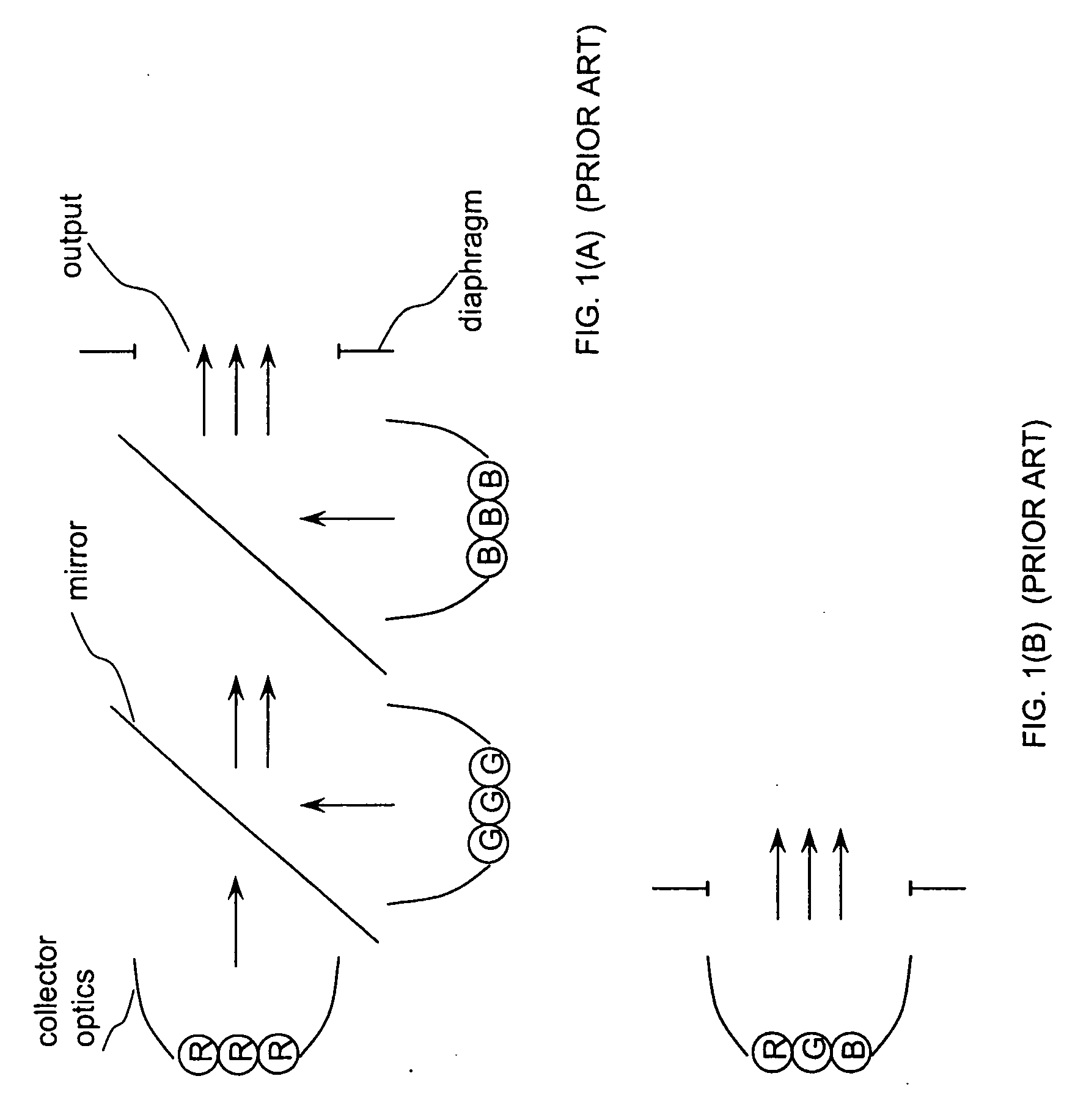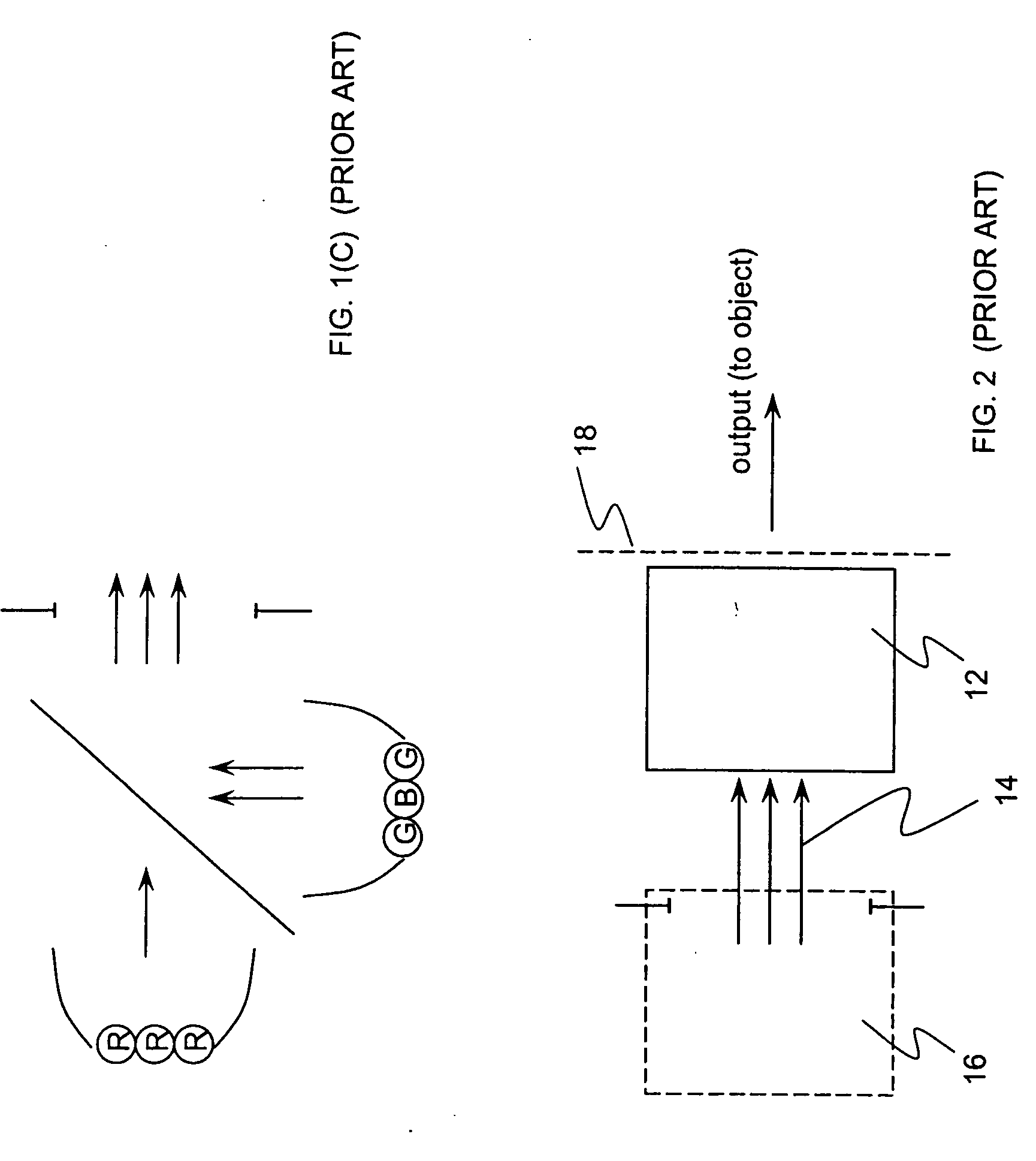Light-pipe integrator with mask for uniform irradiance
a light-pipe integrator and uniform irradiance technology, applied in the field of optical systems, can solve the problems of non-uniformity in the output of traditional light collection systems, lack of homogeneity of both irradiance and intensity, and difficulty in achieving uniform irradiance and intensity, so as to eliminate the need for complex design, optimize light collection, and high fill-factor of the light source aperture
- Summary
- Abstract
- Description
- Claims
- Application Information
AI Technical Summary
Benefits of technology
Problems solved by technology
Method used
Image
Examples
Embodiment Construction
[0031]As mentioned above, the functional performance of ILPs is limited by the fact that the light pipe homogenizes only the irradiance distribution of the light propagating through it, leaving the intensity distribution substantially non-homogeneous. Specifically, the ILP equalizes (at all frequencies) the surface density of the light in any part of the ILP's cross-section, but it does not even out the angular density of the light. As a result, the amount of light energy propagating in a unit solid angle in a certain direction at the output of the ILP generally differs from that propagating in another direction. FIG. 4 provides an illustration to this limitation of conventional ILPs. Therefore, the invention described in Ser. No. 11 / 441,552 is based on the novel idea of “swapping” the angular space and transverse plane distributions of the light at the output of a first ILP and passing such light through a second ILP to homogenize not only the irradiance, but also the intensity dis...
PUM
 Login to View More
Login to View More Abstract
Description
Claims
Application Information
 Login to View More
Login to View More - R&D
- Intellectual Property
- Life Sciences
- Materials
- Tech Scout
- Unparalleled Data Quality
- Higher Quality Content
- 60% Fewer Hallucinations
Browse by: Latest US Patents, China's latest patents, Technical Efficacy Thesaurus, Application Domain, Technology Topic, Popular Technical Reports.
© 2025 PatSnap. All rights reserved.Legal|Privacy policy|Modern Slavery Act Transparency Statement|Sitemap|About US| Contact US: help@patsnap.com



